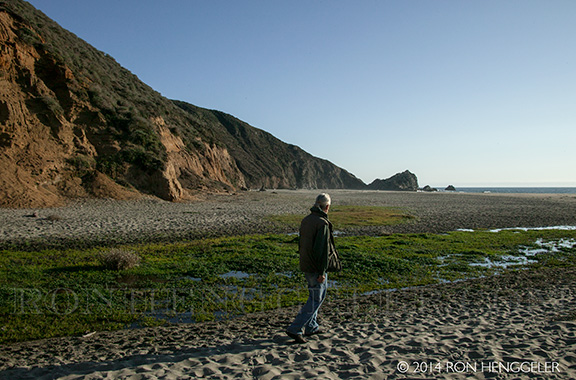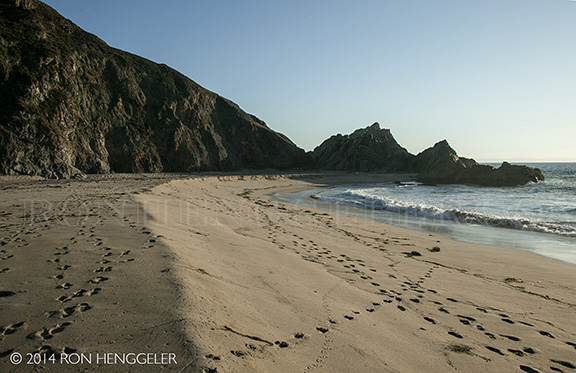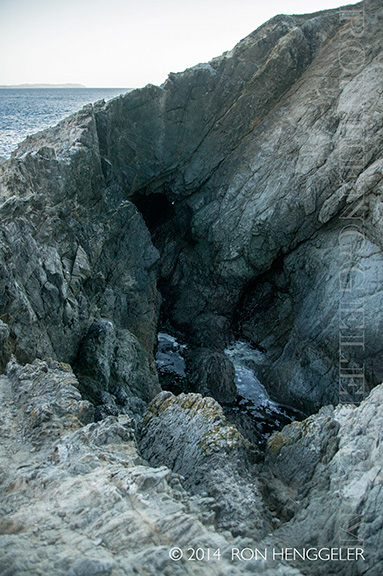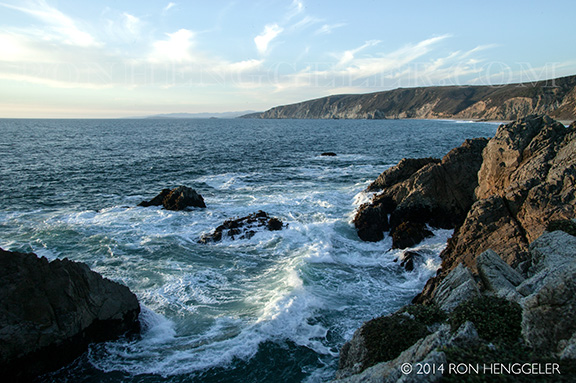RON HENGGELER |
September 28, 2014
Point Reyes on the first day of Autumn
On Monday September 22nd, Dave and I took a road-trip north of San Francisco to the Point Reyes National Seashore.
The day was marked on the calendar as being the first day of Autumn so we wanted to do something out of the ordinary.
It turned out to be an absolutely perfect day for Point Reyes, a nearly cloudless blue sky with 74º from noon until 5pm.
Here are a few photos from the day.
Early in the morning, Francisco and Janis watched us as we prepared to leave for the day. |
A shed in Inverness on the way to Point Reyes National Seashore. |
A view of Sir Francis Drake Blvd. cutting through the Pastoral Lands in the Point Reyes National Seashore. |
A glimpsed view of a barn and out-building on one of the Historic Dairy Farms on the way to the Point Reyes Lighthouse |
Two local residents of the Point Reyes National Seashore and their birds-eye view of the 11 mile-long Great Beach at Point Reyes. |
Unusual cloud formations in the sky above the Point Reyes Lighthouse |
An old unused utility building near the the Point Reyes Lighthouse |
|
A view of the shimmering Pacific from the Observation Deck near the top of the stairs that lead to and from the Point Reyes Lighthouse |
A view of the historic Point Reyes Lighthouse with the 300 steps leading to it. |
Two American tourists speaking with a French woman and her son, at the Observation Deck near the top of the stairs |
A Kodak moment at the Observation Deck near the top of the stairs that lead to and from the Point Reyes Lighthouse |
A view from about half way down the stairs. |
The historic Point Reyes Lighthouse |
The view at the base of the 300 steps looking back up to the top |
A German tourist and his son visiting the Point Reyes Lighthouse |
The historic 1870 Point Reyes Lighthouse |
The view looking south as seen from the historic Point Reyes Lighthouse |
The Fresnel Lens: The French Jewels |
Anela Marie Ramos standing at the base on which the the lens rotates inside the lighthouse. |
The door on the base that opens up to the counterweight and gears of the lens’ rotating mechanism. |
Anela Marie Ramos |
A counterweight and gears similar to those in a grandfather clock rotate the 6000-pound lens at a constant speed, one revolution every two minutes. This rotation makes the beams sweep over the ocean surface like the spokes of a wagon wheel, and creates the Point Reyes signature pattern of one flash every five seconds. |
The Fresnel lens intensifies the light by bending (or refracting) and magnifying the source light through crystal prisms into concentrated beams. The Point Reyes lens is divided into twenty-four vertical panels, which direct the light into twenty-four individual beams. |
Anela kindly allowed me upstairs in the lighthouse so that I could view and photograph the historic lens up close. |
|
The electric light inside the Fresnel lens |
|
A close-up of the prisms that make up the top of the Fresnel lens |
The rare view from inside the Fresnel lens of the 1870 Point Reyes Lighthouse |
Keeping the lighthouse in working condition was a twenty-four hour job. The light was lit only between sunset and sunrise, but there was work to do all day long. The head keeper and three assistants shared the load in four six-hour shifts. Every evening, a half-hour before sunset, a keeper walked down the wooden stairs to light the oil lamp, the lighthouse's source of illumination. Once the lamp was lit, the keeper wound the clockwork mechanism, lifting a 170 pound weight, which was attached to the clockwork mechanism by a hemp rope, nine feet off the floor. The earth's gravity would then pull the weight, through a small trap door, to the ground level 17 feet below. The clockwork mechanism was built to provide resistance so that it would take two hours and twenty minutes for the weight to descend the 17 feet. And as the weight descended and the clockwork mechanism's gears spun, the Fresnel lens would turn so that the light appeared to flash every five seconds. In addition to winding the clockwork mechanism every two-hours and twenty minutes throughout the night, the keeper had to keep the lamp wicks trimmed so that the light would burn steadily and efficiently, thus the nickname "wickie." |
The long trek back up the coastal cliff from the 1870 Point Reyes Lighthouse |
John Reeves Point Reyes Lighthouse Visitors Center |
Brook O’Connor from Bodega Bay with her scope overlooking the 11 mile-long Great Beach at Point Reyes. |
Feeding time at the historic dairy farm near the entrance road that leads to Chimney Rock at Point Reyes National Seashore |
David on McClures Beach with the Caldron right-center on the horizon |
Seagull footprints in the sand on McClures Beach |
The view looking north from McClures Beach |
A view near the Caldron, a dangerous stand of rock where several people have died because of the powerful rogue waves that churn and crash on the face of the Caldron. |
Because of the low tide and calmer waters on Monday, I was able to climb to the top of the Caldron. |
A rare view looking north as seen from the top of the Caldron |
David in the center, carefully walking on the ragged side of the Caldron |
Curious Tule Elk watching David and I on the trail as we were leaving McClures Beach |
A young Tule Elk that we met on the trail coming from McClures Beach |
The watchful eye of another young Tule Elk that we met on the trail coming from McClures Beach |
Leaving McClures Beach inside the Tule Elk Reserve after nightfall, we encountered a large buck and his harem crossing the road |
Nightfall on the first day of Autumn |
Newsletters Index: 2015, 2014, 2013, 2012, 2011, 2010, 2009, 2008, 2007, 2006
Photography Index | Graphics Index | History Index
Home | Gallery | About Me | Links | Contact
© 2015 All rights reserved
The images are not in the public domain. They are the sole property of the
artist and may not be reproduced on the Internet, sold, altered, enhanced,
modified by artificial, digital or computer imaging or in any other form
without the express written permission of the artist. Non-watermarked copies of photographs on this site can be purchased by contacting Ron.














































